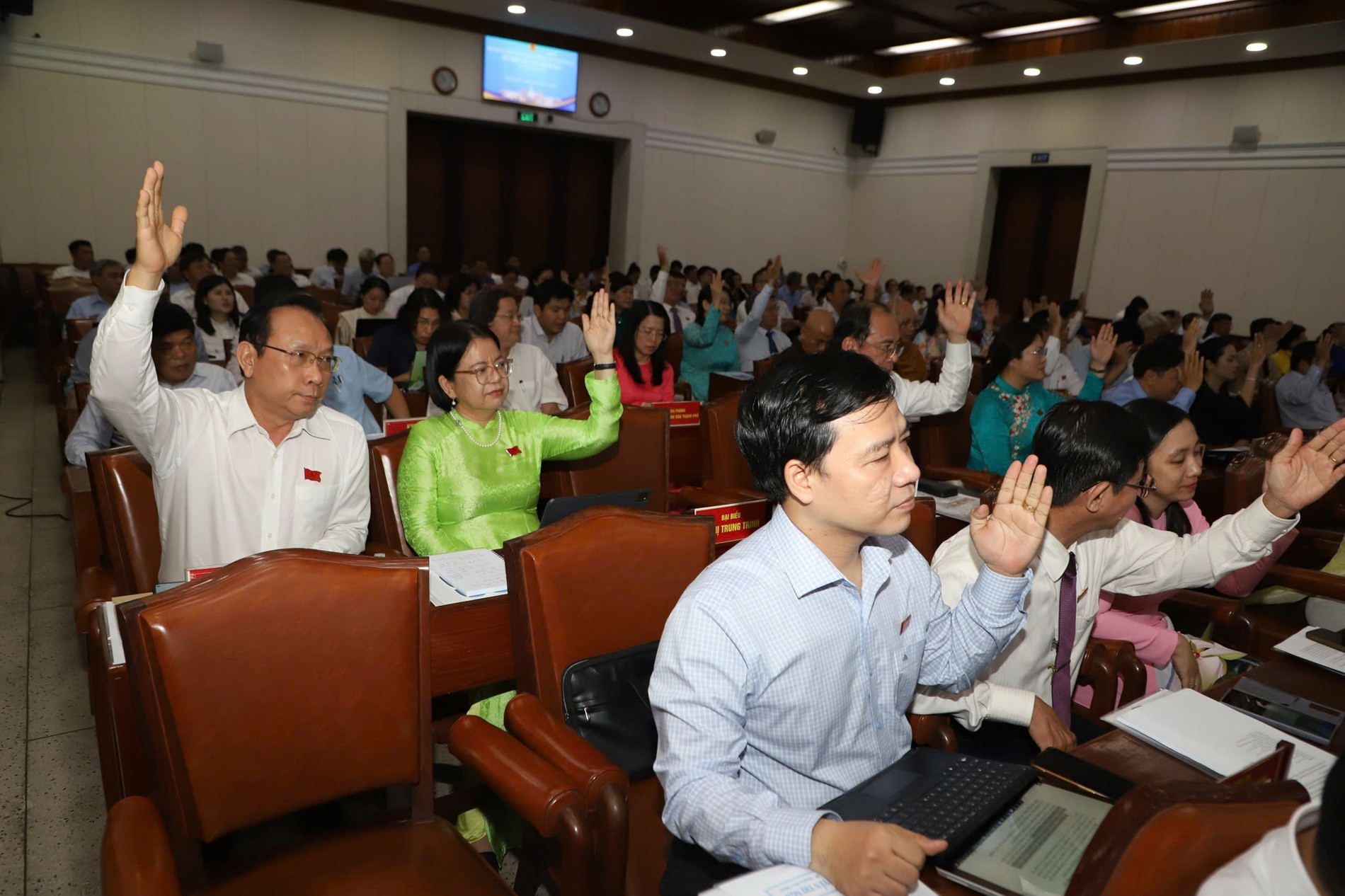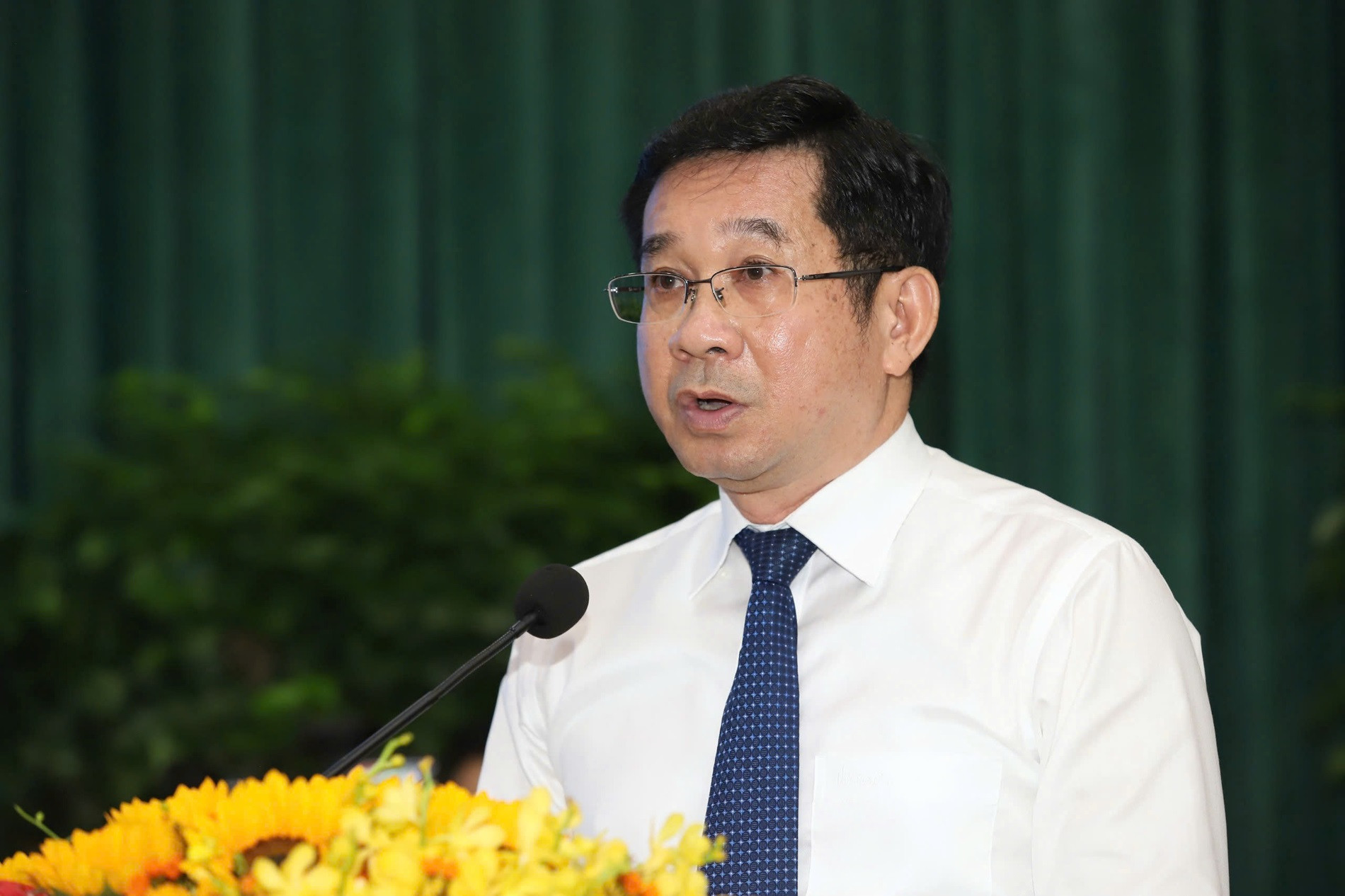The new political-administrative center of Ho Chi Minh City will be located at 86 Le Thanh Ton Street, District 1, with two additional administrative hubs in Binh Duong and Ba Ria - Vung Tau provinces.

At a special session on April 18, the Ho Chi Minh City People's Council officially passed a resolution approving the merger of Ho Chi Minh City, Binh Duong Province, and Ba Ria - Vung Tau Province into a new centrally governed urban unit, which will retain the name Ho Chi Minh City.
According to the resolution, the main political-administrative center of the new city will remain at 86 Le Thanh Ton, District 1. Additional administrative facilities will be located at the administrative center of Binh Duong Province (Thu Dau Mot City) and the administrative center of Ba Ria - Vung Tau Province (Ba Ria City).
The People's Council has tasked the city government with urgently collaborating with the authorities of Binh Duong and Ba Ria - Vung Tau to finalize the merger proposal for submission to the Central Steering Committee and the Government Steering Committee on administrative unit restructuring. The plan is to complete and submit the proposal before May 1.
Previously, the HCMC People's Committee had submitted a detailed proposal for reorganizing provincial-level administrative units, with the main approach being to merge the three regions into a new entity under the name Ho Chi Minh City.
Following the merger, the expanded Ho Chi Minh City will cover 6,772 square kilometers, have a population of 13.7 million, and include 190 administrative units. This move is expected to create a new supercity and serve as the primary growth engine for the Southeast region.
The city government noted that the new metropolis will capitalize on contiguous geography, favorable natural conditions, well-integrated transportation infrastructure, and complementary economic scales across the three regions. This is expected to unlock development potential, optimize resource use, and drive comprehensive economic growth.
Additionally, the new city will gain access to more land for urban planning and population redistribution. It will also enhance road, waterway, and maritime connectivity between the three areas, especially among seaports and economic hubs.
However, the proposal also identifies initial challenges, including the vast area and population, changes in administrative structures, geographic distances between agencies and residents, and socio-economic differences among the merged regions.
Planned staff streamlining

Under the new city structure, there will be 168 commune-level administrative units, including 113 wards, 54 communes, and one special district (Con Dao).
The Communist Party apparatus will include six upper-level organizations: the Party Committee of the City People’s Committee, the Party Committee of the City’s Party organizations, the Party Committee of the City Police, the Party Committee of the Military Command, the Party Committee of the Border Guard Command, and the Party Committee of the National University of the City, along with 168 grassroots-level Party committees.
The leadership of the Vietnam Fatherland Front will be reorganized as well, with the Central Standing Committee aligning with the new City Party Committee to establish a unified Vietnam Fatherland Front Committee for the newly formed city.
Regarding personnel, the current staffing levels in each agency will remain temporarily unchanged to ensure continuity while the administrative apparatus is reviewed and reorganized. Based on guidance from central authorities, the city will issue specific directives and roadmaps for gradually reducing public servant numbers to meet central government targets.
Specifically, 9,732 non-specialized personnel will be subject to downsizing through policy measures in 2025. For the 12,600 surplus commune- and district-level officials and civil servants, the reduction plan will extend until 2029, with an annual target of cutting approximately 2,500 positions.
Ho Van